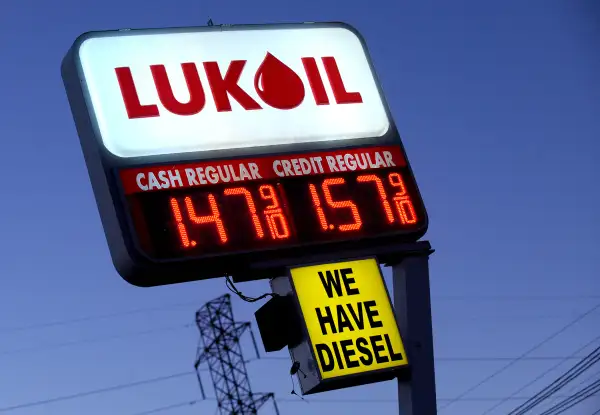Gas Prices Are Falling at an Incredible Rate—and Why That's a Problem

The national average for a gallon of regular gasoline dipped to $1.937 on Thursday, according to AAA. Average prices are down 6¢ over the past seven days, as drivers in every state in the country have benefited from increasingly cheaper prices.
For the sake of comparison, average per-gallon prices were 16¢ higher a year ago at this time—when we were all gobsmacked at how cheap gas prices were. Here's another way to put this into perspective: Remarkably, the price of a gallon of regular averaged $3.60 for all of 2012, or $1.64 more than it is right now. For 2016 as a whole, experts like GasBuddy are forecasting an average of a mere $2.28 per gallon, down from $2.40 in 2015.
Cheap prices at the pump are obviously great for American drivers, who saved $550 on average last year, and who will spend even less on gas in 2016.
What could be wrong with this? Well, some have pointed out that the money Americans save on gasoline is being spent rather than saved or used to pay down debt. And it's being spent in ways that aren't exactly good for us. Namely, we're spending a disproportionate amount of the gas savings on things like fast food, tobacco, alcohol, and (in some cases) gambling.
Gas prices have also had significant effects on automakers. On the one hand, cheap gas is great for automakers, who have credited prices at the pump as part of the reason that there were record-high sales in 2015, including particularly strong sales for pricey (and fuel-inefficient) SUVs and trucks.
On the other hand, however, things have become extremely complicated for automakers because cheap gas is at odds with long-established goals of increasing fuel economy and shifting to electric and other alternative-fuel power.
When gas is only $1.50 or $2 a gallon, drivers have little financial incentive to seek out vehicles that run on little or no fuel—not if it means other sacrifices, like less space and power, limited driving range, and higher initial prices. Hence, the rise of SUV sales and a corresponding fall-off in sales of electric cars and fuel-efficient hybrids like the Toyota Prius.
Read next: Why This Might Be the Beginning of the End for the Toyota Prius
In 2012 (when gas prices averaged $3.60 remember), U.S. regulators established the goal of nearly doubling fuel-efficiency of new vehicles, with automaker fleets expected to average 54.5 mpg by 2025. For a while, average fuel economy crept upwards. But then, as gas prices tanked in 2015 and mileage became less of a priority for car buyers, average mpg for new cars plateaued and even declined a little.
The trends put automakers in an awkward spot, facing the contradictory pressures of churning out popular SUVs to meet the demands of today's drivers while simultaneously planning for a rapidly approaching future expected to be dominated by electric cars and car sharing.
“Over the weekend I saw the lowest gas prices I’ve seen in a long time, at $1.68 -- that’s a world of hurt for selling electric and selling efficiency,” Mark Wakefield, of AlixPartners, explained this week to Bloomberg News. “Now you have consumers at odds with regulators, and, stuck in the middle, is the auto industry.”
Read next: This Game-Changing Minivan Will Make You Dump Your SUV
For the time being, it looks like automakers have little choice but to keep playing both sides of the equation. They'll keep pumping up SUVs and trucks to maintain strong sales in the era of cheap gas and a preference for larger, higher vehicles. Yet they'll also keep pursuing futuristic models like VW's electric micro-bus BUDD-e and Chrysler's electric minivan because, well, this is where the market's heading in the future.
That future, in which self-driving cars and more car sharing are expected to be realities, "will clearly favor EVs," IHS Automotive analyst Egil Juliussen told Automotive News. "That's a big reason why you're seeing so much activity in the EV space even though the market so far has been a bit of a disappointment."
